Nate's reviews and writings
Mega Man X8
 The second video game I ever played was Mega Man 2. Since then, I've
finished twenty-eight games with "Mega Man" in the title, most of them
multiple times. I was the sixth person in the United States to submit a
game completion time to the leaderboards in Mega Man 9, the afternoon it
was released. I was fifth in Mega Man 10. I beat Mega Man 9 without
taking any damage, earning the "Mr. Perfect" in-game challenge title.
I'd even go so far as to say Mega Man 9 was my favorite release in
2008, a year packed with great titles that don't look like they were made twenty years ago and forgotten in a time capsule somewhere.
The second video game I ever played was Mega Man 2. Since then, I've
finished twenty-eight games with "Mega Man" in the title, most of them
multiple times. I was the sixth person in the United States to submit a
game completion time to the leaderboards in Mega Man 9, the afternoon it
was released. I was fifth in Mega Man 10. I beat Mega Man 9 without
taking any damage, earning the "Mr. Perfect" in-game challenge title.
I'd even go so far as to say Mega Man 9 was my favorite release in
2008, a year packed with great titles that don't look like they were made twenty years ago and forgotten in a time capsule somewhere.
I enjoy Mega Man, you guys. Like, kind of a lot.
Because I didn't have a PlayStation 2 until a few months ago, I missed out on two titles released exclusively on that system, Mega Man X7 and Mega Man X8. I recently came across the latter in the bargain bin of a local game shop, so I figured I'd give it a shot. The Mega Man X series had started to lose its way by the sixth game (my least favorite game in the series, oh no!) but I had heard good things about X8.
I was understandably excited to start a relatively new Mega Man game for the first time. So how did the first hour go?Metroid: Other M
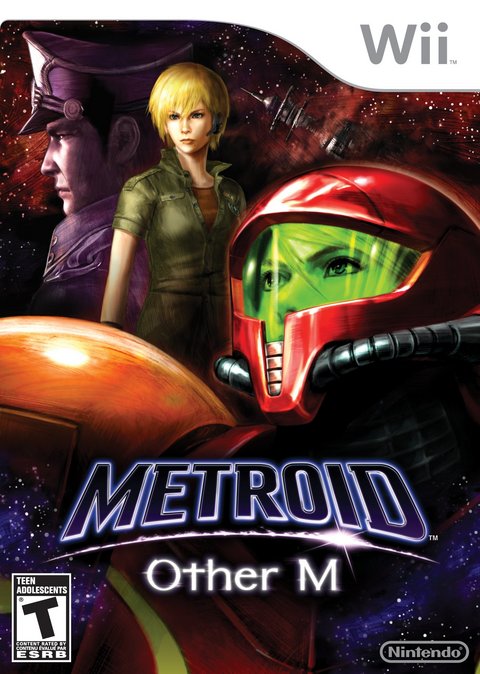 Metroid has never been one of Nintendo's big money-makers, but that
hasn't stopped the franchise from garnering some very devoted fans. It's
not uncommon to see Super Metroid or Metroid Prime sitting atop the
list of favorites from hardcore gamers, and for good reason. Super
Metroid provided a sprawling, interlacing realm of disquieting alien
dangers and secrets, and Metroid Prime translated that experience into
3D with incredible audio-visual design and some interesting
world-building mechanics built right into the gameplay.
Metroid has never been one of Nintendo's big money-makers, but that
hasn't stopped the franchise from garnering some very devoted fans. It's
not uncommon to see Super Metroid or Metroid Prime sitting atop the
list of favorites from hardcore gamers, and for good reason. Super
Metroid provided a sprawling, interlacing realm of disquieting alien
dangers and secrets, and Metroid Prime translated that experience into
3D with incredible audio-visual design and some interesting
world-building mechanics built right into the gameplay.
Though there's certainly a base blueprint from these two trailblazers, no two Metroid games feel exactly alike. Even so, I've found something to love in each and every one of them (except for the antiquated debut NES game, which admittedly I just played for the first time days before Other M's release). The tension of being hunted in Fusion, the sudden shifts in power at Zero Mission's final hour, the thousands of text logs scattered through the Prime series...as far as I'm concerned, it's all great stuff.It's only natural that the formula would see some alterations and evolutions over a quarter of a century, and Metroid: Other M is the latest and most radical experiment to come out of Nintendo's R&D labs in quite some time. Featuring third-person 3D action gameplay and a heavy emphasis on cinematic storytelling, the curiously-subtitled Other M certainly feels very different from its predecessors. It seems to take after Metroid Fusion the most, with a bit of Metroid Prime in there as well, but Other M's additions and adaptations certainly make it feel distinct, for better or worse.
Metroid: Other M
 I was first introduced to Samus Aran through her appearance in the Super Smash Bros. fighting game in 1999. As Smash is a melee-centric brawl, I always imagined Samus as an agile and powerful close-combat fighter who happened to have an arm cannon as well. In 2002, I eventually played Super Metroid and Metroid Prime, and discovered that Samus, both in 2D and 3D, fought primarily with her many energy-based weapons. I certainly enjoyed each of the games, but still yearned to see the hulking heroine kick some ass in a more literal sense.
I was first introduced to Samus Aran through her appearance in the Super Smash Bros. fighting game in 1999. As Smash is a melee-centric brawl, I always imagined Samus as an agile and powerful close-combat fighter who happened to have an arm cannon as well. In 2002, I eventually played Super Metroid and Metroid Prime, and discovered that Samus, both in 2D and 3D, fought primarily with her many energy-based weapons. I certainly enjoyed each of the games, but still yearned to see the hulking heroine kick some ass in a more literal sense.To everyone's surprise, Nintendo ended their E3 2009 presentation with a trailer of the next Metroid game. Created through a collaborative effort between Nintendo's internal studios and Team Ninja of Ninja Gaiden fame, this Metroid: Other M featured Samus Aran's return to third-person adventuring after many years spent behind the visor. Jaws were dropped, however, when the bounty-hunting babe began tossing her foes around like rag dolls, grabbing them in choke-holds, and firing charged beam shots right into their faces. Could this be the Metroid Gaiden I had been waiting for?
The months that led to Other M's release at the end of August tempered my expectations somewhat as new details were revealed, but I was still fairly excited when the game was shipped to my door earlier this week. Did my first romp with Other M leave me disappointed or eager to see more?
Killzone 2
 Back at E3 2005, Sony showed off two minutes of "in-engine footage"
of a highly detailed military shooter. The visuals were unmatched by
anything previously seen in a video game, and PlayStation fans went
nuts. In the comings days, Sony eventually backpedaled from their
initial claim and admitted that the footage wasn't pulled from any
gameplay architecture, and was instead a target render "done to PS3
spec." In a matter of weeks, Killzone 2 went from the new standard of
visuals to a fraud.
Back at E3 2005, Sony showed off two minutes of "in-engine footage"
of a highly detailed military shooter. The visuals were unmatched by
anything previously seen in a video game, and PlayStation fans went
nuts. In the comings days, Sony eventually backpedaled from their
initial claim and admitted that the footage wasn't pulled from any
gameplay architecture, and was instead a target render "done to PS3
spec." In a matter of weeks, Killzone 2 went from the new standard of
visuals to a fraud.Sony knew there was some damage control to be done here, and a few years later, the same footage was shown with in-engine graphics. Amazingly, few could tell the difference between the CG target render and the real deal, and the hype train left the station for good. At its launch in early 2009, many media outlets were calling Killzone 2's graphics unparalleled.
My interest in the game had always been lukewarm, considering my waning affinity for military-style first person shooters. Several Call of Duty titles had already come and gone, and none had left a lasting impression upon completion. I hadn't played either of the two previous Killzone games -- who has? -- but I decided to give Killzone 2 a shot anyway. After all, I've got access to a pretty amazing HDTV and surround-sound system, so I might as well put them to use.
DK: Jungle Climber
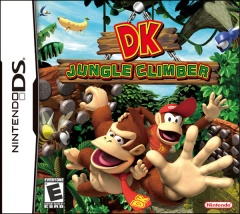 One of the more common complaints you'll hear from Nintendo ex-fans is
that the Big N hasn't made any new franchises in a very long time. For
evidence, critics often point to Super Smash Bros. Brawl,
the game that has become a showcase for iconic Nintendo characters past
and present, and correctly note that none of the game's playable
characters are from a franchise created after 2001's Pikmin.
You'd think the one game that celebrates the whole history of
Nintendo's creations would put some recent stars at the forefront, and
yet there are none.
One of the more common complaints you'll hear from Nintendo ex-fans is
that the Big N hasn't made any new franchises in a very long time. For
evidence, critics often point to Super Smash Bros. Brawl,
the game that has become a showcase for iconic Nintendo characters past
and present, and correctly note that none of the game's playable
characters are from a franchise created after 2001's Pikmin.
You'd think the one game that celebrates the whole history of
Nintendo's creations would put some recent stars at the forefront, and
yet there are none.
There's a point to be made there, but I don't think it's that Nintendo isn't creating new experiences. Nintendo has been delivering unique titles all along, but skinning them with familiar faces in an effort to grab the mass-market that buys based on brand name alone. It's a practice that probably went into full swing after the amazing success of Super Mario Kart, a racing game that could have been released with the image of any other combat-focused racer and nobody would have ever thought to liken it to the Super Mario series. Nintendo found a way to make the racing formula mesh with a beloved franchise and exploited the mustached plumber's image for instant brand recognition on a whole new product. It wasn't long before every Nintendo character became a pitchman: the ever-adaptable Kirby was a given, and other Mario-verse mascots like Yoshi and Wario weren't stretches either, but even seemingly untouchable characters like Samus and Link are now lending their images to genres that only vaguely fit into their traditional roles.
Enter DK: King of Swing on the Game Boy Advance in 2005. The game could be categorized as a platformer, but the focus on running and jumping had shifted to climbing and swinging, using the system's shoulder buttons. King of Swing received enough positive reviews and sales to spawn a sequel, DK: Jungle Climber, for the Nintendo DS in 2007. Like many hardcore gamers, this game launched well under my radar, but I recently gave the game a shot. Is the stigma of a spinoff warranted, or will I see something new underneath the same old monkey business?Scott Pilgrim vs. The World: The Game
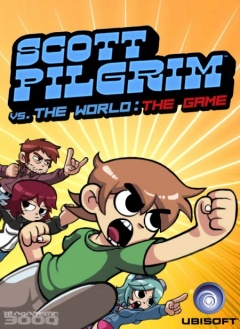 "No More Heroes: The Movie." That's how I've been introduced to a
film that opened last Friday, Scott Pilgrim vs. The World, each and
every time a friend first mentions it to me. I suppose it's a valid
parallel: it stars a maladjusted young adult living on the fringe of
suburban society fighting over-the-top duels through an organization in
order to win official rights to a girl he already has some sway with,
utilizing a presentation style that pays tribute to classic video game
quirks. Whatever you liken it to, it's a unique movie worth seeing for
any self-diagnosed gaming nostalgist, or anyone who wants to see a
quirky romantic comedy that doesn't take itself seriously and manages to
make Michael Cera actually seem kind of badass.
"No More Heroes: The Movie." That's how I've been introduced to a
film that opened last Friday, Scott Pilgrim vs. The World, each and
every time a friend first mentions it to me. I suppose it's a valid
parallel: it stars a maladjusted young adult living on the fringe of
suburban society fighting over-the-top duels through an organization in
order to win official rights to a girl he already has some sway with,
utilizing a presentation style that pays tribute to classic video game
quirks. Whatever you liken it to, it's a unique movie worth seeing for
any self-diagnosed gaming nostalgist, or anyone who wants to see a
quirky romantic comedy that doesn't take itself seriously and manages to
make Michael Cera actually seem kind of badass.Prior to seeing the movie, I played a bit of Scott Pilgrim vs. The World: The Game, which was released on PlayStation Network last Tuesday and will be available on Xbox Live Arcade one week from today. In an interesting blend of media paying homage to each other, Scott Pilgrim: The Game borrows its name from its film counterpart, its artistic style from the comic series that was adapted into the movie, and its gameplay from the classic video games that infuse the culture of the comics and movie. Specifically, this is a River City Ransom clone if ever there was one, sharing that cult classic's brawler mechanics, RPG elements, and humorous tone.
Considering I wasn't too impressed with River City Ransom when I downloaded it off the Virtual Console, I had mixed feelings going into Scott Pilgrim vs. The World: The Game. I'm all for modern throwbacks to the era of chiptunes and sprites, but I've never been a big supporter of the RCR-style focus on stats. How did the trade-off fare in my first hour with the game?
Sin & Punishment: Star Successor
 Back when I was a kid, I loved telling people about things that I enjoyed. I would explain, in excessive detail, how amazing whatever I had just witnessed was. I distinctly remember recounting the entirety of a particularly amazing Simpsons episode to a friend in grade school, to the point where he rolled his eyes and walked away in disbelief of my obsession. I understood that he couldn't appreciate the episode without watching it and that my overexcited babbling would do Leonard Nimoy's brilliant guest appearance no justice, but I couldn't stop myself. I find myself thinking back on old times like this one because, as I sit down to write first hour reviews for this site, I look at the massive walls of text that result from my sixty minutes with some very entertaining games and think about just how powerless those words are compared to the experience in my mind.
Back when I was a kid, I loved telling people about things that I enjoyed. I would explain, in excessive detail, how amazing whatever I had just witnessed was. I distinctly remember recounting the entirety of a particularly amazing Simpsons episode to a friend in grade school, to the point where he rolled his eyes and walked away in disbelief of my obsession. I understood that he couldn't appreciate the episode without watching it and that my overexcited babbling would do Leonard Nimoy's brilliant guest appearance no justice, but I couldn't stop myself. I find myself thinking back on old times like this one because, as I sit down to write first hour reviews for this site, I look at the massive walls of text that result from my sixty minutes with some very entertaining games and think about just how powerless those words are compared to the experience in my mind.On that note, I've had to do some significant editing to this first hour review of Sin & Punishment: Star Successor. I knew I would enjoy the game after playing through its prequel a few weeks ago for the first time, but my enthusiastic ramblings from that first hour were anything but concise. I threw out a lot of what I had originally written, and it's still far longer than the average first hour review here. If you want the long and short of it up front, just imagine playing Star Fox 64 with one hand and House of the Dead with the other and you've got the jist of Star Successor. Only this version of Star Fox 64 is much more difficult, and this version of House of the Dead has dozens of things to shoot on the screen almost all the time.
I'll just go ahead and say it up front: Sin & Punishment: Star Successor is a serious contender for my game of the year. I do hope the text gives you an idea of how the game works and whether or not you should go out and buy it right this very minute, but one glance at the sheer length of this review should let you know just how much I enjoyed it.
Bangai-O Spirits
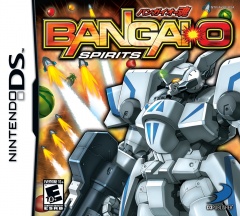 It seems I've been on a bit of a Treasure fix lately. Last month, I finally got around to playing Gunstar Heroes,
the first Virtual Console game I bought back in 2006 and Treasure's
very first game. The Genesis cult classic set the niche developer's tone
by throwing unprecedented amounts of enemies and projectiles at the
player from start to finish. A few weeks ago, I tried out the VC release
of N64 import darling Sin & Punishment, which warmed the heart of this old Star Fox 64 veteran. I've also begun playing that game's recent Wii sequel, Sin & Punishment: Star Successor, and should have my thoughts on that title up soon.
It seems I've been on a bit of a Treasure fix lately. Last month, I finally got around to playing Gunstar Heroes,
the first Virtual Console game I bought back in 2006 and Treasure's
very first game. The Genesis cult classic set the niche developer's tone
by throwing unprecedented amounts of enemies and projectiles at the
player from start to finish. A few weeks ago, I tried out the VC release
of N64 import darling Sin & Punishment, which warmed the heart of this old Star Fox 64 veteran. I've also begun playing that game's recent Wii sequel, Sin & Punishment: Star Successor, and should have my thoughts on that title up soon.But today's subject is Bangai-O Spirits, a critically-praised title that didn't sell very much (as expected), though chalk up one more sale for Treasure: the $8.75 price tag on Amazon was an offer I couldn't refuse. This 2008 DS title is a sequel of sorts to the Dreamcast's Bangai-O (and its lesser-known, Japanese-exclusive N64 counterpart). True to Treasure's modus operandi, Bangai-O Spirits challenges the player to battle through 150+ stages filled with overwhelming swarms of enemy missiles and bullets on-screen. The game also features two- to four-player wireless cooperative and competitive battles and a robust set of stage editing and sharing features.
Treasure is a company known for making difficult games, and Bangai-O is noted as one of the developer's tougher titles. There's no question I'll crash and burn in my first thirty minutes with Bangai-O Spirits, but will I emerge from the wreckage seething or satisfied?
My JRPG Localization Wishlist
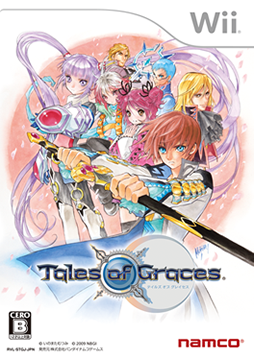 For years, Japan was the dominating force in the games industry. Ever
since Nintendo blasted onto the scene in the eighties, it's always been
my opinion that the developers in the land of the rising sun have had
the edge on everyone else. The Atari age has long since given way to
names like Nintendo, Sega, Sony, Capcom, Konami, Square, and so many
others. If I made a list of my hundred favorite games, I'd be willing to
bet that seventy or more of them come from Japan.
For years, Japan was the dominating force in the games industry. Ever
since Nintendo blasted onto the scene in the eighties, it's always been
my opinion that the developers in the land of the rising sun have had
the edge on everyone else. The Atari age has long since given way to
names like Nintendo, Sega, Sony, Capcom, Konami, Square, and so many
others. If I made a list of my hundred favorite games, I'd be willing to
bet that seventy or more of them come from Japan.These days, however, the tide has shifted. The worldwide yearning for platformers and action games and traditional RPGs has been eclipsed by the first person shooter and sports game markets, two genres that Japanese developers are woefully unfamiliar with. Only the top games in each genre outside of Halo clones and Madden wannabes can make bank anymore, and developers are starting to play it safe with what they bring to the table. One genre affected by this trend is the JRPG, which has always had a focus in Japan, but also branched out to the world stage more often than not. These days, however, it seems Japan's favorite genre seems to be transforming more and more into Japan's shyest genre, rarely coming out to say hi to the rest of us.
In a rather shocking revelation, I've actually managed to find a hearty list of JRPGs that I pine for. I've never been the genre's biggest supporter, which doesn't surprise me in retrospect considering I never owned a SNES, Playstation, or Playstation 2 during their primes. However, I hereby pledge to buy any of the following games that come to America. I said the same thing about Tatsunoko vs. Capcom, thinking it would have no chance of arriving; I made good on my promise, bought TvC: Ultimate All Stars, and loved it. So it's on you now, localization teams. Make it happen.
Sin & Punishment
 Every Monday morning since the Wii craze began in November 2006, the Wii
Shop Channel has been updated with new downloadable titles to purchase.
The Virtual Console, one of the Wii's few enticing tidbits to core
gamers at launch, promised to make all our favorite classic games
through the N64 era available on one piece of hardware. Things started
out strong for the VC, which reached the 100-game milestone just over
six months after launch. It seems Nintendo just couldn't keep that pace,
however, as the first seven months of 2010 have seen less than twenty
new retro titles. With obvious Nintendo classics like Star
Fox, Yoshi's Island, Pilotwings 64, and Excitebike 64 still waiting to
be let loose -- in addition to the many unseen third party games worth
revisiting -- it seems far too early for the Virtual Console to receive
less than one title a week.
Every Monday morning since the Wii craze began in November 2006, the Wii
Shop Channel has been updated with new downloadable titles to purchase.
The Virtual Console, one of the Wii's few enticing tidbits to core
gamers at launch, promised to make all our favorite classic games
through the N64 era available on one piece of hardware. Things started
out strong for the VC, which reached the 100-game milestone just over
six months after launch. It seems Nintendo just couldn't keep that pace,
however, as the first seven months of 2010 have seen less than twenty
new retro titles. With obvious Nintendo classics like Star
Fox, Yoshi's Island, Pilotwings 64, and Excitebike 64 still waiting to
be let loose -- in addition to the many unseen third party games worth
revisiting -- it seems far too early for the Virtual Console to receive
less than one title a week.
The future of the Virtual Console was looking bright in 2007, however, when Nintendo decided to make the N64 import classic Sin & Punishment available outside of Asia for the first time. It seems Treasure always planned a western release, as all the voice acting was performed in English (with Japanese subtitles), even in the original Japanese cartridge. The rumor is that a dried-up N64 market in 2000 made the niche developer think twice. In a rare showing of extra effort on Nintendo's part, Sin & Punishment was the first of a small collection of games formerly exclusive to Japan to make it to the Americas. It probably didn't take that much effort, though, since the only translation required was in the main menu and tutorials. The original Japanese subtitles persist even in the localized version.
I'd always planned on putting down the $12 to try Sin & Punishment at some point, but I figured the recent release of Sin & Punishment: Star Successor for the Wii makes this as good a time as any. Might as well snag the N64 game for some context, right? I downloaded the game with the intent of completing a first hour review for our readers, but it seems there isn't a whole lot to talk about beyond that first sixty minutes, so this has been upgraded to full review status. Lucky you!
